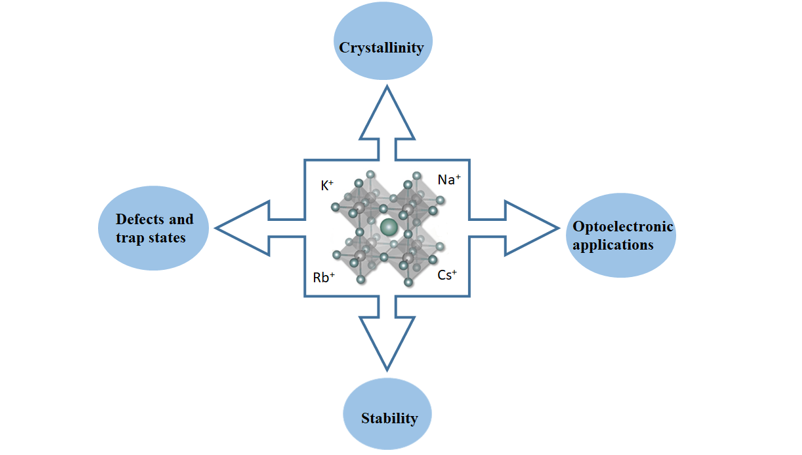Video Article Open Access
Tuning the Optical Properties of MAPbBr3 Perovskite Nanocrystals via Alkali Metal Ions Doping
Madeeha Tabassum1,#, Qasim Zia2, Yongfeng Zhou1, Lei Su1,*
1Queen Mary University of London, London, E1 4NS, United Kingdom
2University of Manchester, Manchester, Postal M13 9PL, United Kingdom
Vid. Proc. Adv. Mater., Volume 3, Article ID 2208320 (2022)
DOI: 10.5185/vpoam.2022.08320
Publication Date (Web): 22 Dec 2022
Copyright © IAAM
Graphical Abstract

Abstract
Halide perovskite materials have emerged as a class of excellent semiconductors in high-performance optoelectronic applications. These materials demonstrate unique optical and electrical properties such as, tunable band gap, high photoluminescence quantum yields (PLQYs), strong light absorption coefficient and efficient charge carrier mobility, hence could exhibit promising future for next-generation electronic devices [1,2]. Regardless of their noted performance, methylammonium (MA)-cation based perovskite are blamed for their instability towards high temperature, oxygen and moisture which considerably influence their remarkable performance in optoelectronic applications. Herein doping of alkali metal ions (Rb+ and Cs+) in three-dimensional methylammonium lead bromide (CH3NH3PbBr3) is a particular focus in terms of synthesis, and doping-induced changes in optical properties. Three-dimensional CH3NH3PbBr3 nanocrystals were prepared by modified ligand-assisted reprecipitation technique at room temperature. The as-synthesized CH3NH3PbBr3 nano-crystals are predominantly single crystalline with the sizes changing from 9nm to 15nm and a cubic morphology with no substantial change in shape perceived on incorporating cesium and rubidium ions. After addition of alkali metal ions, reduction in d-spacing comparing to the MA-cation was observed. The decrease in lattice fringe distance is due to the doping of smaller size cesium atoms (1.81 Å) compared to the MA atoms (2.70 Å), resulting in a reduced volume of cubo-octrahedral for the A-site cation. Furthermore, the optical properties of perovskites nanocrystals was measured by UV-Vis spectroscopy and absorption band was blue shifted from 535nm to 530nm after doping of cesium atoms indicates the increase in bandgap. Hence, the alkali metal ions including cesium (Cs), and rubidium (Rb) have been successfully doped into the perovskite nanocrystals, giving rise to stability towards temperature, light and moisture.
Keywords
Perovskite nanocrystals; alkali metal ions; stability; defects passivation.
Acknowledgement
We acknowledge financial support from Higher Education Commission Pakistan (HRDI UESTPs/ UET’s-Phase-I/6016/2018) and Queen Mary, University of London.
References
- V. Nguyen, H. Katsuki, F. Sasaki, and H. Yanagi, “Single-crystal perovskite CH3NH3PbBr3 prepared by cast capping method for light-emitting diodes,” 2018, 10, 2-5.
- Z. K. Tan et al., “Bright light-emitting diodes based on organometal halide perovskite,” Nat. Nanotechnol., 2014, 9, 687-692. DOI: 10.1038/nnano.2014.149.
Biography
Madeeha Tabassum is a PhD candidate in the School of Engineering and Materials Science of the Queen Mary University of London. She has a B.Sc. (2013) and M.Sc. (2016) degree in Textile Engineering. Her research involves the synthesis of nanostructures for application in wearable electronics.
Video Proceedings of Advanced Materials

Upcoming Congress



